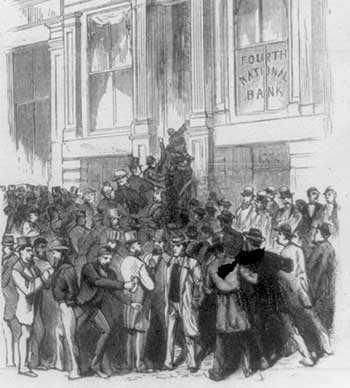Introduction
The Depression of 1873, also known as the Long Depression and the Panic of 1873, was a world-wide depression that lasted from 1873-1879 during which banks closed, businesses failed, unemployment went up, wages were cut, and real estate values dropped.
This depression ultimately resulted in the end of Reconstruction.

Following successful completion of this lesson, students will be able to...
- Describe the Compromise of 1877
Essential Questions
- How did Southern opposition to Radical Reconstruction, along with economic problems in the North, help bring about the end of Reconstruction?
Enduring Understandings
- Although Reconstruction was a brief period in American history, its social and political effects impacted America well into the 20th century.
The above objectives correspond with the Alabama Course of Study: United States History I standards: 15.3.